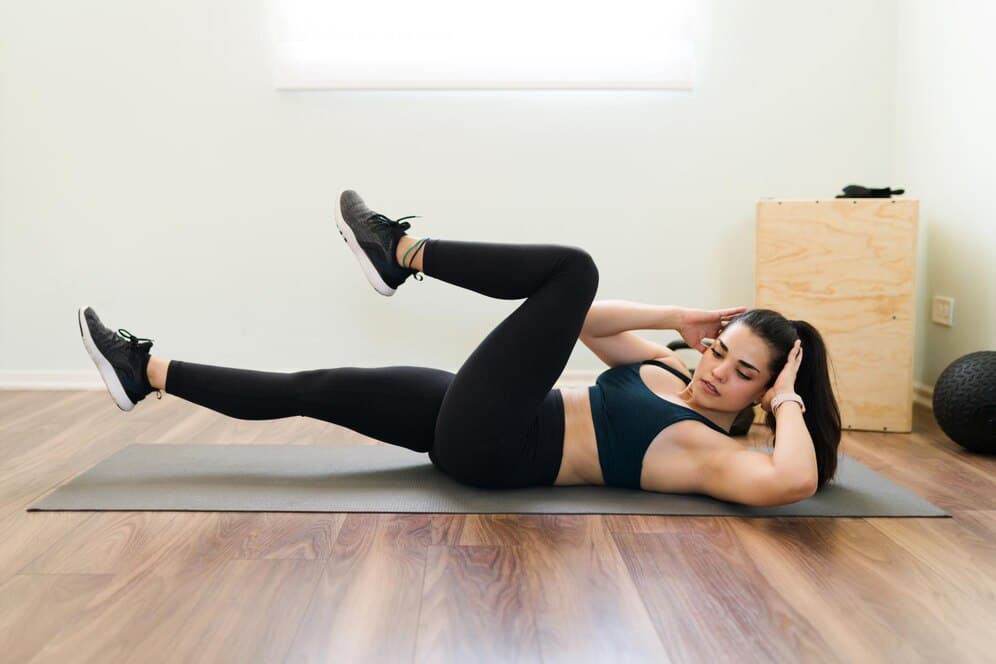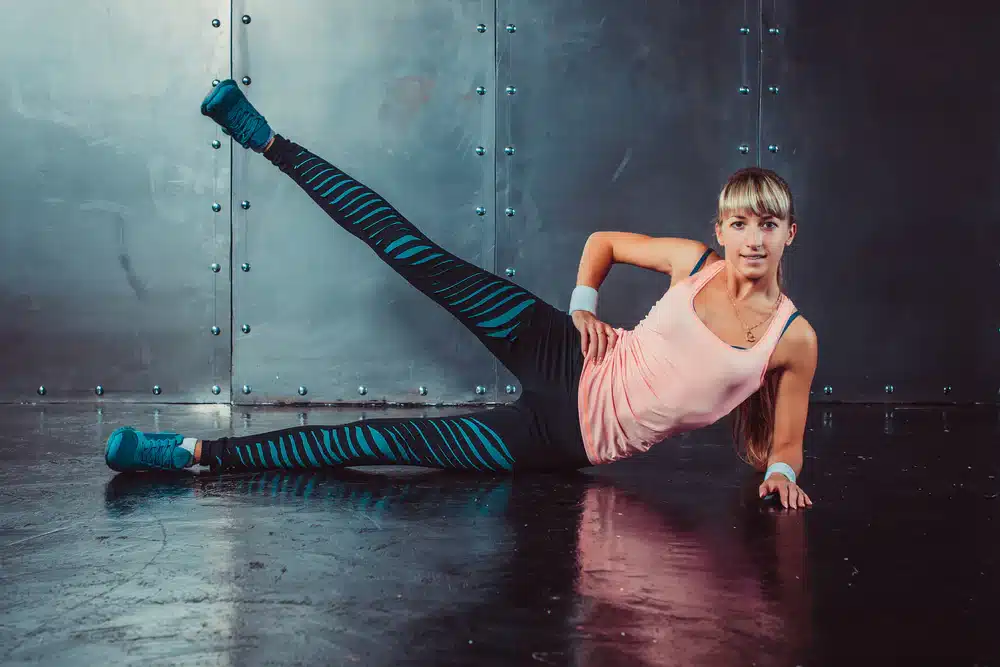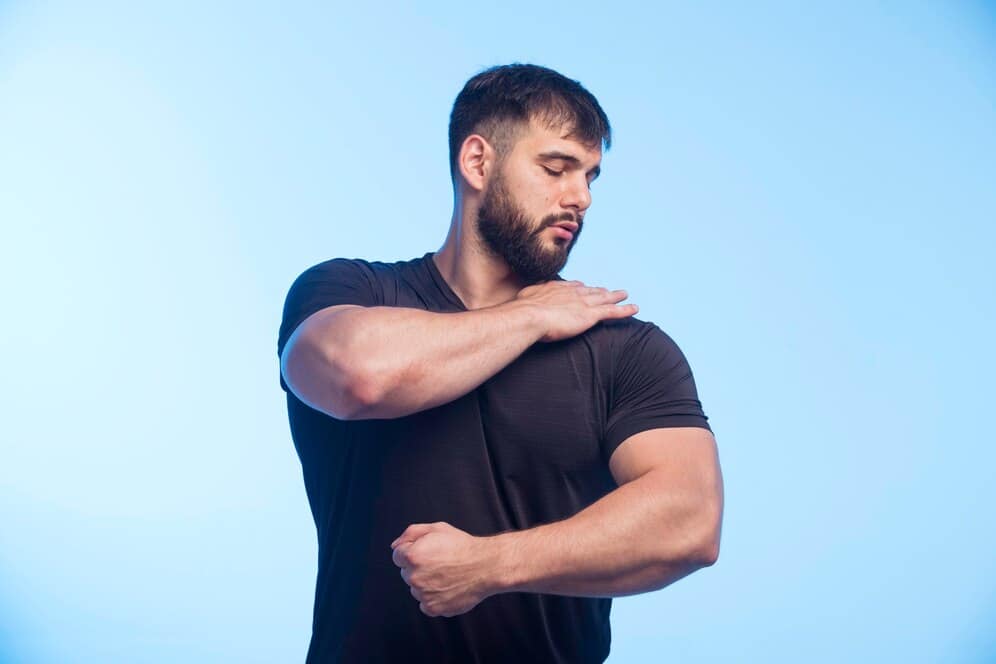Are you struggling with persistent pain on the outer part of your knee or hip?
This may be due to a problem called iliotibial band (IT) syndrome, an overuse injury common among runners and cyclists.
In this blog post, we will discuss what the IT band is, symptoms of related syndromes, and unique stretches that can help alleviate discomfort associated with it.
Let’s explore these solutions together:
Understanding the Iliotibial Band
The Iliotibial Band, also known as the IT Band, is part of our body. It’s a thick band of fascia that runs on the outside of your hip. It goes down to your outer knee and shinbone.
The IT Band helps you move by connecting important muscles in your hip and knee.
You’ll find this band working hard during activities like running or cycling. Hiking and weightlifting can make it work too much sometimes. This could cause something called Iliotibial Band Syndrome (ITBS).
But doing right exercises like Clam, side-lying leg lifts or straight leg raises may help manage these symptoms.
Effective IT Band Stretches and Exercises
Here are a couple of IT band stretches and workouts that will help alleviate pain:
1. Foam Roller Release
Foam roller release is an effective way to stretch and loosen the IT band. Using a foam roller can help reduce pain and discomfort caused by tightness in this area. By rolling the foam roller along the outer thigh, you can target the IT band and apply pressure to help release tension.
This technique is especially beneficial for individuals with IT band syndrome, as it can aid in recovery and prevent future issues.
Adding foam roller release to your stretching and exercise routine can improve flexibility and alleviate symptoms associated with a tight IT band.
2. Quadriceps Stretch
The quadriceps stretch is an important exercise for people with IT band syndrome. This stretch helps to loosen and lengthen the muscles in the front of your thigh, including the quadriceps.
To do this stretch, stand near a wall or sturdy object for balance. Bend one knee and lift your foot behind you towards your buttocks. Use your hand to gently pull your foot closer to your body until you feel a gentle stretch in the front of your thigh.
Hold this position for about 30 seconds, then switch sides and repeat. By regularly doing the quadriceps stretch, you can help alleviate pain and improve flexibility in your IT band.
3. Hamstring Stretch
Stretching the hamstring is an important part of an effective IT band stretching routine. The hamstring muscles are located at the back of the thigh and play a vital role in hip extension and knee flexion.
By incorporating hamstring stretches into your exercise routine, you can improve flexibility, prevent tightness, and help alleviate pain associated with IT band syndrome. Properly stretching the hamstring muscles can also aid in preventing and treating injuries.
So don’t forget to add some hamstring stretches to your IT band stretching exercises for better mobility and pain relief!
4. Gluteal Stretch
Stretching the glutes is an important part of preventing IT band injuries and improving flexibility.
Clam exercises are known for strengthening the gluteal muscles and relieving tension in the IT band. By incorporating regular gluteal stretches into your routine, you can help alleviate any discomfort or pain associated with IT band issues while also promoting overall flexibility and muscle strength.
5. Piriformis Stretch
The piriformis stretch is an effective exercise for stretching the IT band. It helps to alleviate tightness and discomfort in the hip, buttocks, and outer thigh. To perform this stretch, sit on the ground with one leg straight and the other leg bent, crossing over your straight leg.
Gently twist your upper body towards the bent knee while using your opposite arm to pull your knee closer to your chest. Hold this position for about 30 seconds, feeling a gentle stretch in your glutes and outer thigh.
Repeat on both sides to ensure balanced stretching of the IT band.
6. Side-Lying Leg Lift
Side-Lying Leg Lift is a great exercise for people with tight IT bands or IT band syndrome. It helps to stretch and strengthen the muscles in the hips, which can relieve pain and discomfort.
This exercise targets the core, glutes, and hip abductors, improving stability and strength in those areas. You can do Side-Lying Leg Lifts at home or at the gym with minimal equipment.
They are an effective way to prevent IT band injuries and improve overall leg strength and stability.
7. Seated Leg Extension
Seated leg extensions are a great exercise for targeting the IT band and helping with IT band syndrome. To do this exercise, sit in a chair with your back straight and feet flat on the ground.
Place a resistance band around your ankles. Slowly extend your left leg out in front of you while keeping your knee straight. Repeat this movement 10-15 times on each side. It’s important to perform the exercise with proper form to get the maximum benefit and avoid injury.
Seated leg extensions can help strengthen the muscles around the IT band and alleviate symptoms of IT band syndrome, such as pain and discomfort on the outer side of the knee.
8. Straight Leg Raise
Straight leg raises are a great way to stretch the IT band and relieve tension in the muscles connected to it. This exercise involves lying on your back and lifting one leg straight up towards the ceiling, keeping your knee as straight as possible.
You can use a resistance band around your foot for added intensity. Straight leg raises not only stretch the IT band but also strengthen your legs. They are particularly effective in alleviating IT band syndrome by reducing pain and improving flexibility.
So, if you’re looking for an efficient IT band stretch that provides multiple benefits, give straight leg raises a try!
Related: Resistance Band Exercises
9. Crossed Leg Forward Tilt
Crossed leg forward tilt is an effective stretch for the IT band. This stretch involves sitting on the floor with one leg crossed over the other and reaching forward towards your toes.
It helps to lengthen and release tension in the IT band, promoting flexibility and reducing tightness. By regularly practicing this stretch, you can prevent issues like IT band syndrome and improve overall hip and leg health.
So, include crossed leg forward tilt in your stretching routine to keep your IT band happy and healthy!
IT Band Syndrome: Causes and Symptoms
IT Band Syndrome is often caused by overuse or repetitive motions, and common symptoms include discomfort or pain on the outer side of the knee, a pulling sensation on the outer side of the thigh, and a snapping sensation in the knee.
Discomfort or pain on the outer side of the knee
Pain on the outer side of the knee is a sign of IT Band Syndrome. This can feel like sharp or dull pain just above your knee. It might get worse when you walk, run, or go up and down stairs.
Some people also feel it when they are sitting for too long with their knees bent.
The pain is due to tightness in the iliotibial band. The IT band is a fibrous band that goes from your hip muscles to your knee muscles. When this band gets too tight, it pulls on the side of your knee and causes pain.
Overuse plays a big part in causing this issue. Activities that stress the knee like weightlifting, hiking, and cycling can lead to IT Band Syndrome.
Pulling sensation on the outer side of the thigh
A pulling feeling on the outer part of the thigh might mean you have IT Band Syndrome. This happens when your Iliotibial band is too tight or overused. The band gives your hip and knee strength, so it’s important to keep it loose.
Stretches and exercises can help make it better. Using a foam roller also helps.
Snapping sensation in the knee
Snapping in the knee is a clear sign of IT Band Syndrome. This feeling can put you off balance and cause pain. Overuse and repeated moves cause this problem. It’s common in folks who run, lift weights, hike or cycle a lot.
The snap comes from swelling and hurt in the knee and nearby cords.
Importance of IT Band Stretches
Stretching the IT band is crucial for maintaining flexibility and preventing injuries. By regularly stretching this band of connective tissue, you can improve your range of motion and reduce tightness in your hip and thigh muscles.
This not only helps to alleviate discomfort but also lowers the risk of developing IT band syndrome, especially for people who engage in activities like running, weightlifting, or cycling.
Additionally, incorporating IT band stretches into your routine can enhance overall athletic performance by promoting proper alignment in the hips and knees. So don’t forget to include these stretches in your workout regimen to keep your body flexible, mobile, and injury-free!
Additional Remedies for ITB Syndrome
– Acupuncture: Acupuncture can help relieve pain and inflammation associated with ITB syndrome.
– Sports Massage: Deep tissue sports massage can target the tight muscles in the IT band and provide relief.
– Hot and Cold Therapy: Alternating hot and cold therapy can reduce inflammation and alleviate discomfort.
– NSAIDs: Nonsteroidal anti-inflammatory drugs (NSAIDs) like ibuprofen can help manage pain and reduce swelling.
– Healthy Diet: Eating a nutritious diet rich in fresh fruits, vegetables, and herbal supplements can support recovery from ITB syndrome.
Conclusion
In conclusion, incorporating IT band stretches into your exercise routine can help reduce pain and discomfort associated with IT band syndrome. It is important to target the muscles surrounding the IT band, such as the glutes and quads, for effective relief.
Remember to consult a doctor if you experience persistent pain or symptoms worsen. Stay proactive in taking care of your body and maintaining flexibility to prevent future issues with your IT band.
FAQs
What are some IT band stretches that can help with tightness and pain?
IT band stretches such as the standing IT Band stretch, side-lying ITB stretch, and belt ITB stretch can reduce knee pain, hip discomfort and symptoms of a tight IT band.
How can I make my fitness journey better with treatments for a tight IT band?
You can try passive treatments like deep tissue massage for myofascial release or active treatments like foam rolling plus strength training exercises including squats, lunges, hip thrusts, or lateral leg raises.
Can tools or fitness accessories help in treating an inflamed It Band?
Yes! Using a foot & leg stretcher or knee sleeves on your yoga mat while doing seated spinal twist yoga pose helps in inflammation reduction thereby aiding muscle strengthening and flexibility improvement.
Is nutrition important when recovering from an it-bands injury?
Sure! Alongside your exercise program incorporating sports nutrition options like whey protein powder after workouts could aid recovery time by promoting muscle building and fat loss.
How to follow a healthy lifestyle to avoid it-band syndrome relapse?
Doing low impact activities like swimming or restorative yoga coupled with intake of fresh fruits & vegetables is key; also remember not to stop your iliotibial band stretches routinely!
Are these practices beneficial only for runners suffering from ‘Runner’s Knee’ condition?
No. Other than runners knee patients; weightlifters, hikers too will find relief by consistent use of methods including wall-ITB-Stretch followed up by creatine monohydrate intake post-workout for enhanced recovery.









